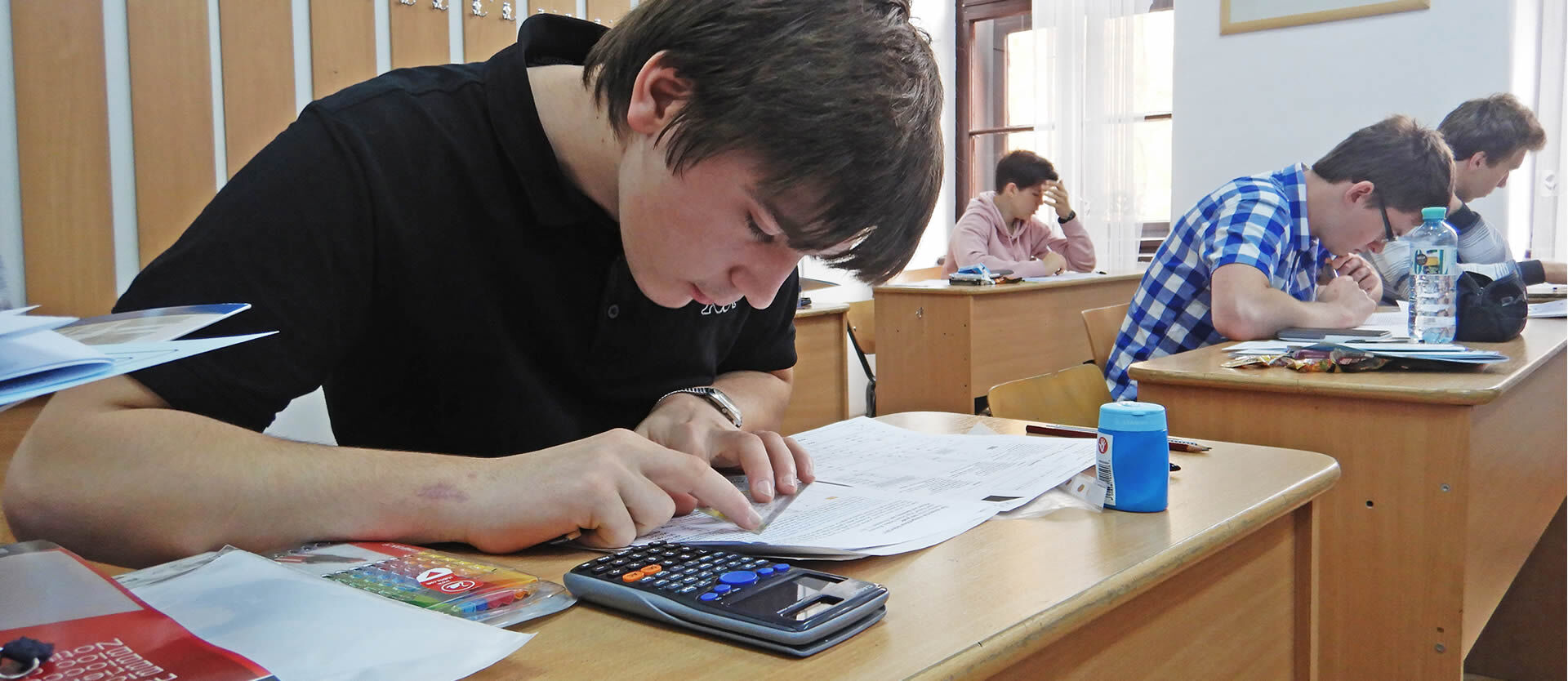Physics, Culture and Stalagmites

Serafin Körner (15) is nervous. Sitting at a small wooden desk in the Ady Endre High School (Gymnasium) in Oradea in Romania, he has just been given the problems set for the Schwartz International Physics Competition. They take up three A4 pages. Serafin carefully reads through the questions on the paper, and turns to the task at hand. Then he picks up his pencil and set square, and begins to calculate.
Serafin spent most of the previous day on a bus, as part of a group of high-school students and university students who were made the approximately 1000-km trip from Munich to Oradea to take part in the competition. The team had been invited to Romania by Dr. Istvan Bartos. For decades, Bartos taught Physics at the Ady Endre Gymnasium, which became the venue for the competition that he first organized in 1991. Last year, together with a party of students from the school, Bartos called on Prof. Ferenc Krausz’ Laboratory for Attosecond Physics (LAP) at the Max Planck Institute for Quantum Optics (MPQ) and, of course, the group also visited the PhotonLab, which is under the direction of Dr. Silke Stähler-Schöpf. This visit gave rise to the idea that German students might be interested, and could be inspired, to participate in the international competition.
That is why Serafin is here, as one of 82 competitors between the ages of 15 and 23, who now have 3 hours to solve a roster of problems in physics and chemistry. The Schwartz Competition is divided into five categories: one each for high-school students in classes 10 to 12, one for university students, and finally a special category devoted to experimental physics. Serafin is in 9th class and is therefore competing in the youngest category. The first problem is in the field of optics, and asks competitors to calculate the thickness of a lens with the aid of Pythagoras’ Theorem. The second question moves from the lens-grinder’s workshop to the billiard table. Here one is asked to calculate the ratio of the masses of two unequal billiard balls from the trajectories they follow when they collide. The final problem brings chemistry into play: Here, the task is to calculate the final density of a mixture of substances concocted by an apothecary.
One distinctive feature of the Schwartz Competition is its homely character. Participants arrive on the day before the test and are accommodated in the school dormitory. All come together for meals in the refectory and, needless to say, much of the table talk focuses on physics and on the upcoming tests. “There were three of us in my room,” says Ann-Kathrin Raab. She is now studying Physics at the Technical University of Munich (TUM) and was one of the members of the PhotonLab team assigned to the Students Category. “We quickly made friends and enjoyed our time together,” she says. On the evening after the competition, contestants had a chance to get to know the night life in Oradea in the company of participants from Hungary and Romania. The lingua franca of the competition (aside from mathematics) is English.
For Serafin – who attends the Grünwald Gymnasium on the outskirts of Munich – not only the competition itself but the whole trip was an exciting experience. “I had never been to Romania before,” he says – and for the Sunday following the main event the organizers had arranged a sight-seeing tour for the visitors. Istvan Bartos led his charges to the so-called Bears’ Cave some 85 km to the east of Oradea. The highlight of the visit to the cool, damp system of corridors and chambers was undoubtedly the huge domed hall which, when illuminated by artificial light, was revealed to be studded with stalactites and stalagmites and other. Not only that, this part of the cave is also the last resting place of a cave bear, as witnessed by its 15,000-year-old skeleton. The day ended with a guided tour of the old town center of Oradea, whose late 19th- and early 20th-century architecture reflects Hungarian influence.
In the competition, Serafin was ranked in the upper midrange of the final table. He has long been fascinated by physics – just like his grandfather, who was Professor of Nuclear Physics at the TUM. “It was great to be able to take part in the Physics Competition here, to make new friends and to explore the city and its surroundings,” he says. He hasn’t yet decided whether he wants to follow in his grandfather’s footsteps and study physics, or become a doctor like his father.
Serafin’s team-mates also made a good impression in the Schwartz Competition, but then they had been well prepared, not least thanks to the support of the Hungarian laser physicist Dr. Zsuzsanna Major, a member of the LAP. Jonas Hamp was entered in the same category as Serafin and also landed in the middle ranks. Ann-Kathrin Raab came third in the Experimental Category, which was evaluated separately. In this case, the participants were asked to give a precise physical description of an experiment that was demonstrated by Istvan Bartos. The star of the team, however, was Sven Jandura, who is studying Physics at LMU Munich. He not only took the top prize in his category, he did so with highest score ever awarded in the history of the competition.










